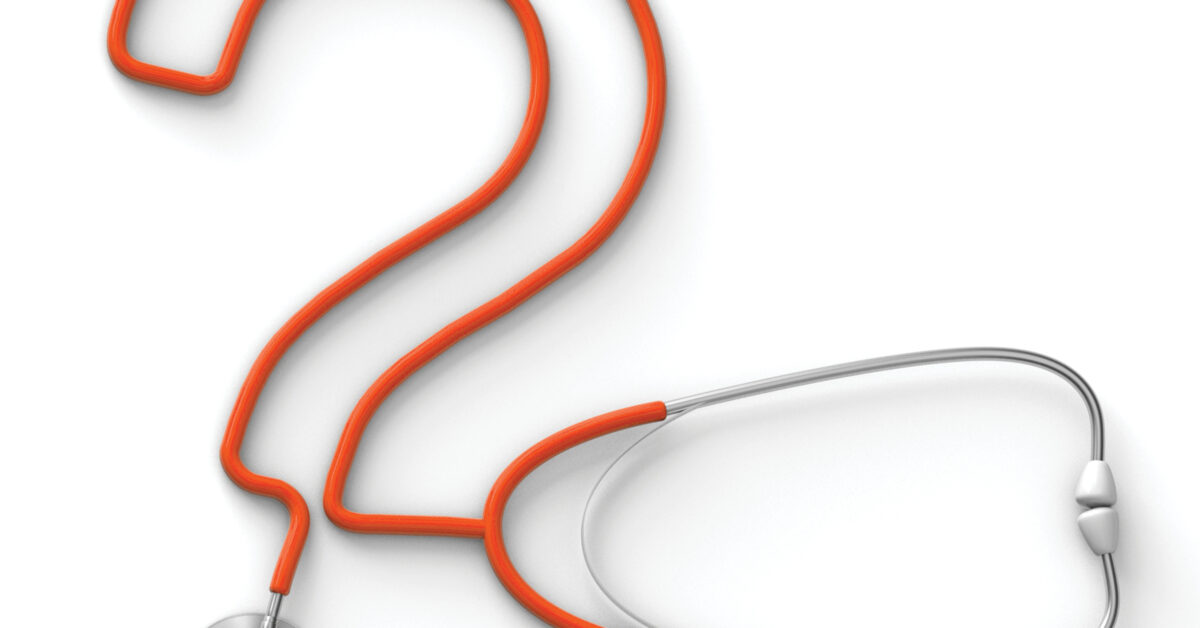
Celebrate Seasonal Flavors!
October 2022
Medical Marijuana in SWLA: Medicis Pharmacy is at Your Service
November 2022A twinge here, a new pain there, and where did this bruise come from? Our bodies are very good at telling us when something is not quite right. But what do these signs and symptoms indicate? Sometimes it’s hard to tell. That’s where a doctor comes in – to determine a diagnosis and treatment plan.
In this special section, we cover a variety of common aches, ailments, and other maladies and have the experts break them down with possible causes and how to treat them.
Focus on the Eyes for Early Warning Signs of Health Problems
by Kristy Como Armand
Your eyes may be your windows to the world, but they also provide a glimpse into your overall health, including diseases and conditions of which you may be unaware.
That’s why having regular eye exams is so important. “During a fully dilated eye exam, we’re checking your vision and eye health, and we’re also able to see small changes in the blood vessels and tissue in the back of the eye,” explains board certified ophthalmologist Donald Falgoust, with Falgoust Eye Medical & Surgical in Lake Charles. “In fact, the eyes are actually the only place in the body where doctors can directly visualize nerves and blood vessels without an incision, providing us with a clear, unobstructed view.”
Recent advancements such as digital retinal imaging allow eye doctors to detect and monitor changes in the eye more easily. “Certain changes within the eye can be a reflection of changes occurring throughout the entire body, of which the patient may not even notice,” says Dr. Falgoust.
Here are some of the most common warning signs of health problems that can be detected during an eye exam, as well as eye-related symptoms that you should discuss with your eye doctor:
Droopy eyelid
This condition, called ptosis, can be a sign of aging, but in rare cases, it can be evidence of a brain tumor or a neuromuscular disease known as myasthenia gravis (MG), an autoimmune disorder that weakens muscles throughout the body.
Yellow eyes
Diseases of the liver, including hepatitis and cirrhosis, can turn the white portion of the eyes yellow. The color is caused by the buildup of bilirubin, a compound created by the breakdown of hemoglobin, the oxygen-carrying molecule inside red blood cells.
Bulging eyes
Though prominent eyes may simply be a family trait, eyes that appear to bulge may be evidence of thyroid disease. Abnormal levels of thyroid hormones cause tissues surrounding the eye to swell, making it appear that the eye is bulging.
Dry eyes
When symptoms of dry, burning, irritated eyes occur in combination with a dry mouth, that’s indicative of Sjogren syndrome. Sjogren syndrome, along with joint pain, could be rheumatoid arthritis.
Pupil abnormalities
The pupils of healthy people are usually symmetrical. They’re typically the same size and show the same reaction upon exposure to light. If one pupil is bigger than the other, or if one pupil shrinks less, or more slowly, on exposure to light, there could be an underlying medical problem. Possibilities include:
stroke; brain or optic nerve tumor; brain aneurysm; or multiple sclerosis.
Skin cancer
A retinal nevus is a freckle on the back of the eye, just like you’d have a freckle on your skin. These are fairly common, but if the freckle grows larger, it could be a sign of a melanoma.
Optic nerve abnormalities
The optic nerve transmits visual information from the retina to the brain. A healthy optic nerve should be pink. If it’s pale, it could be an early manifestation of multiple sclerosis, or evidence of a brain tumor or aneurysm.
Retinal defects
Various medical conditions, most commonly diabetes, atherosclerosis and high blood pressure, can damage the blood vessels and nerves in the retina. This retinal damage – which can cause blindness – can take several forms, including tiny hemorrhages, leaks of yellowish fluid, and puffy-looking whitish patches.
If you notice any of these signs in your own eyes, Dr. Falgoust says you should see an eye doctor right away. “Identifying early signs of certain conditions can lead to earlier, more successful treatment in many cases. The worst thing you can do is ignore one of these signs, or any other change in your eyes. Your vision – and your health – could depend on a quick response.”
For more information or to schedule an eye exam, call (337) 477-0963 or visit www.falgousteye.com.
What’s Causing your Headaches?
by Kristy Como Armand
Most people will experience a headache at some point in their life, whether from sinus congestion, stress, hormonal fluctuations, or having too many drinks the night before. Determining the type of headache a person has is key to knowing how to manage it best.
According to Darci Portie, APRN-FNPC, founder of the Headache & Wellness Center in Lake Charles, the location of the headache—whether it’s the entire head, one side of the head, the front of the head, or the back of the head—is a good first step in identifying the cause. “Where your head hurts isn’t a conclusive way to diagnose the cause, but it can be a good starting point for figuring out the source of the problem. It’s important to understand that sometimes a headache is not ‘just a headache,’ but a symptom of another type of health problem.”
Portie offers the following guide to help determine what your headache pain could mean:
Pain on one side of your head:
This type of pain is a classic migraine symptom. Migraines are usually one-sided, although many people can experience them on both sides. Migraines are the second leading cause of disability and affect about 1.04 billion people worldwide. These headaches often worsen with movement and activity. Other symptoms may include throbbing or pounding; sensitivity to light, sound, and sometimes smells; nausea; and vomiting. Many patients also have periods before and after a migraine where they experience symptoms. Other health conditions that could cause migraine-like symptoms, but are much less likely, include autoimmune diseases, brain tumors, and hemicrania continua, a one-sided headache that doesn’t go away.
A band around your head or entire head:
This is likely a tension headache, the most common type of headache. They can range from mild to moderate and can happen either infrequently or, for some people, several times a week. Tension headaches usually cause pain on both sides of your head, mainly your forehead, temples, the back of your head, and sometimes your neck and shoulders. The pain usually feels like pressure. When tension headaches occur, there is often muscle tightness in these areas, which can cause discomfort. Stress, depression, anxiety, and head injury may also contribute to tension headaches. Other common triggers include hormonal fluctuations, eye strain, dental issues, and sinus infections.
Pain around the eyes:
Head pain in and around your eyes can be a classic sign of a cluster headache. Cluster headaches get their name because these headaches tend to occur in groups or clusters, with the pain lasting up to three hours. Cluster headaches are one of the most painful types of headaches but also one of the rarest. When these headaches occur, they may happen multiple times a day or days apart. Once the episode is over, you may not experience another cluster headache for weeks or even years. The pain from a cluster headache is intense and often concentrated behind one eye. It typically peaks within 10-15 minutes, and there may be eyelid drooping or swelling on the side of the eye pain. In addition, restlessness and agitation can develop as well as sweating. You may also develop a stuffy or runny nose.
Front of your head and face:
A sinus headache, called sinusitis, occurs when the sinus passages behind your eyes, nose, cheeks and forehead are congested. Although most people believe they have these types of headaches, they are actually rare and can often be confused with a tension headache or a migraine.
Neck and back of the head:
If you experience headaches that radiate from the neck to the back of your head, you may have a cervicogenic headache. A cervicogenic headache is a secondary headache, which means it is caused by another illness or physical issue. You may find your headaches worsens with some neck movements or when pressure is applied to certain spots on your neck. If you experience pain from the base of your skull that radiated upward, it could be due to a rare type of chronic headache called occipital neuralgia. Occipital neuralgia can be triggered quickly, lasting from a few seconds to a few minutes.
“There are many aspects to a headache and location is only a piece of the puzzle,” says Portie. “To get the right treatment for recurring headaches, you need the right diagnosis. And that starts with an exam and evaluation of your headache history.”
For more information or to schedule an appointment, call 337-508-2333 or visit www.headacheandwellness.com.
Signs you need immediate medical attention for a headache:
Sudden onset of severe headache
A rigid neck
Double vision
Weakness or paralysis on one side of your body
Numbness on either side of the body
Balance and coordination problems
Speech difficulties
High fever
Lethargy
Reduced or altered consciousness level
Hallucinations
The Effects of Stress on the Body
by Christine Fisher
Stress is unavoidable, whether it arises from everyday life or a major event. Not knowing how to deal with it in the right way can take a tremendous toll on your health.
“Stress affects every part of the body; it advances the aging process and can cause sleeplessness, headaches and lower back pain. If ignored, it can lead to, or worsen, serious medical conditions, such as heart disease, depression, anxiety and diabetes. It has also been known to advance the spread of certain cancers,” says Rebecca Braud, MD, family medicine physician with West Calcasieu Cameron Hospital.
It’s easy to blow off stressors as minor inconveniences, whether you had a bad day at work or got stranded in the school pick-up line. Maybe you are in the middle of a crisis and accept high levels of stress as being part of the process. However, stress works like a savings account; each experience—big or small—deposits tension into your body and over time it grows.
“When you feel physical symptoms of stress, like a tension headache, it’s your body’s way of sending a warning,” said Dr. Braud. “It’s telling you that you need to take better care of yourself. You need to listen to this message so it doesn’t grow into a more serious problem.”
Stress is a natural part of life. When the mind perceives a threat or emergency, it creates a fight-or-flight response by altering the body’s chemistry. Increased levels of adrenaline, norepinephrine and cortisol cause your heart to race. Then your blood pressure increases the oxygen moving into the muscles.
National and global events that are beyond one’s control can greatly affect a person’s stress level. “We are living in a stressful era,” says Dr. Braud, “with things happening on a global scale that affect us, but we have little to no control over them.” Results from a study conducted by the American Psychological Association show nearly 65% of adults in the U.S. say the current amount of uncertainty in the nation causes them stress.
“We all know that old saying ‘when it rains it pours,’ but that’s exactly how stress works. Prolonged episodes can cause frequent rushes of cortisol that throw the body into overdrive, weakening the immune system,” she explained. “This is why it’s not abnormal to catch a cold or feel dizzy or distracted when you’re experiencing high levels of stress, whether it’s a buildup of daily aggravations or acute stress, which is caused by a life-changing event such as death or divorce.”
Stress has many faces. The way people experience it is part of their personality, whether they explode, get emotionally upset or become distantly calm. The way we naturally approach stress is through a combination of nature and nurture. Most people tend to model their parents’ reaction to stress – it’s a learned behavior. The other side of stress is genetic predisposition. Scientists have found that we inherit varying levels of a chemical called neuropeptide Y, a natural anxiety reducer that is released during times of stress.
“Although stress is an inevitable part of life, you can learn coping mechanisms to help you protect your body from its negative side effects,” Dr. Braud says.
“Changing the way you approach stress is about breaking familiar routines and habits. Many people try to fight off stress with spontaneous actions or holding it in and refusing to react, but neither of these tactics is a solution. They only build upon the original stressor.”
Here are some strategies for protecting your health from the damaging effects of stress:
Breathe
Stop what you’re doing and take a deep breath. Count backwards from five to one before slowly exhaling. Repeat. After a few deep breaths you will feel a release.
Build up and maintain a strong immune system
Eat well to be sure you get your vitamins; A, C and E, B-complex vitamins, magnesium and zinc are natural immunity boosters.
Keep your doctor’s appointments
It’s important to know where you stand health wise, especially when it comes to your weight, blood pressure and cholesterol.
Get support
No one is a rock. Talk to a supportive friend, but connect with a counselor if it’s a chronic issue to help you build a stress-busting tool-kit that works for you.
Exercise
Not only will make you healthier, it’s also relaxing. Even just a 20-minute walk will relieve stress.
Other psychological factors associated with resilience are humor, faith, volunteering, and looking to good role models. Many of these tactics look simple, and the good news is, they are. However, it can take some time to break old habits. The way we respond to stress has been ingrained in us for a long time, so don’t be hard on yourself as you hit hurdles while working to embrace these new habits.
Good Sleep is the Bedrock of Good Health
If you have difficulty sleeping or suffer from excessive daytime fatigue, you might have sleep apnea.
Sleep apnea involves frequent disruptions in breathing during sleep, which significantly reduces sleep quality and contributes to a higher risk of health problems like cardiovascular disease. People with this common sleep disorder often do not realize that their nighttime breathing is abnormal. However, knowing more about the types of sleep apnea, its causes, symptoms, and treatment can allow people concerned about it to take a more active role in improving their sleep and health.
Excessive daytime sleepiness
Loud snoring that is often punctuated by gasping or choking sounds
Headaches in the morning that may persist for several hours after waking up
Dry mouth upon awakening
Restless sleep with periods of wakefulness during the night
Increased need to get up from bed to urinate
Irritability or frustration
Reduced focus
Specific symptoms of obstructive sleep apnea may not be noticeable to the person with the condition. For example, abnormal breathing and snoring may only come to a person’s attention after a bed partner observes them. “Sleep difficulties can be crippling to your health and life,” says Dr. Phillip Conner, MD, and Physician at the Sleep Disorder Center of Louisiana. ” If you snore loudly and feel tired even after a full night’s sleep, you may have sleep apnea.”
HOW IS SLEEP APNEA DIAGNOSED?
After an initial office visit with Dr. Conner, a board-certified sleep doctor, it will be determined if an overnight sleep study is necessary. Often, more conclusive evidence is needed while you’re sleeping to confirm the correct diagnosis. This study helps diagnose sleep disorders such as sleep apnea, periodic limb movement disorder, narcolepsy, restless legs syndrome, insomnia, nighttime behaviors like sleepwalking, REM sleep behavior disorder, and many other sleep disorders.
The sleep study takes place in one of their onsite bedrooms, which is comfortable, quiet, and dark for sleeping. A certified technologist monitors you during the night, and the data collected is evaluated, scored, and used by the physician for a proper diagnosis of your sleep study. They also offer a home sleep apnea test.
WHAT IS A HOME SLEEP APNEA TEST?
A home sleep apnea test is just as it sounds: a sleep test you do at home to determine if you have sleep apnea. You pick up the equipment for the home sleep test at the Sleep Center, or it can be shipped to you. The data obtained is stored on the equipment and uploaded to the Sleep Center the following day. After interpretation, as sleep specialist calls you with your results.
AN IN-LAB SLEEP STUDY MAY STILL BE NECESSARY
Once diagnosed, your doctor may recommend you have an in-lab test. During this visit, a sleep technologist captures many more signals, including brainwaves for sleep, muscle tone, and leg movements. An overnight study especially preferred for people with certain heart, breathing, or neuromuscular problems.
TREATMENT
For milder cases of sleep apnea, your doctor may recommend only lifestyle changes, such as losing weight or quitting smoking. If you have nasal allergies, your doctor will recommend treatment for your allergies. Several other treatments are available if these measures don’t improve your sleep apnea or if your apnea is moderate to severe. For example, if you have moderate to severe sleep apnea, you might benefit from using a machine that delivers continuous positive airway pressure (CPAP) through a mask while you sleep. With CPAP, the air pressure is more significant than the surrounding air and is just enough to keep your upper airway passages open, preventing apnea and snoring.
Although CPAP is the most common and reliable method of treating sleep apnea, some people find it cumbersome or uncomfortable. They may give up on the CPAP machine, but with practice, most people learn to adjust the tension of the straps on the mask to obtain a comfortable, secure fit. You might need to try more than one type of mask to find a comfortable fit. Don’t stop using the CPAP machine if you have problems. Instead, check with your doctor to see what changes can be made to increase your comfort.
Dr. Conner and his “Dream Team” have over twenty years of experience diagnosing and treating a spectrum of sleep disorders. “If you struggle with sleep, we are here to help,” says Dr. Conner. “Our onsite sleep bedrooms have been newly renovated and await you for your night of restful sleep.”
For more information or to make an appointment, call The Sleep Disorder Center at 337-310-7378 or find them at sleepdisordercenterofla.com. Located at 4820 Lake St., Lake Charles, La.
Why Do My Feet Hurt? Foot Changes Could Indicate Health Problems
by Tori Hebert
Made-up of 26 bones connected by several joints, muscles, tendons and ligaments, our feet are one of the most complex parts of our body. They not only carry us through every step of our lives, but changes can often send alerts for the body’s overall health, according to Christine Palma, DPM, podiatric surgical specialist with Imperial Health.
“Our feet serve such a crucial interrelation to the rest of the body that a podiatrist is often the first one to detect symptoms of conditions such as diabetes or cardiovascular disease,” says Dr. Palma. “Paying attention to the appearance of your feet, and any changes, could help prevent more serious health problems from developing.”
Dr. Palma says there are several common signs to watch for in your feet:
Pain in Big Toe
A painful big toe may indicate gout, a type of inflammatory arthritis that often first appears in the joint of the big toe. Gout is caused by a severer inflammatory response to uric acid crystals which results from high uric acid levels in the blood. “The build-up of uric acid takes place especially at points of low body temperature, and the farthest part of the body from the heart is your big toe,” says Dr. Palma. “Gout seems straightforward, but the symptoms can often mimic those of infection, fractures or inflammatory arthritis.” Other symptoms of gout include swelling and shiny red or purplish skin along with a sensation of heat and pain.
Clubbing of the Toes
A change in the toes’ shape to one of a clubbed appearance (rounder, wider toes) can be a sign of lung cancer, chronic lung infection, heart disease, or intestinal disease. Dr. Palma explains that clubbing of the toes can also occur because of several other conditions like cystic or pulmonary fibrosis, bronchiectasis, asbestosis or liver disease.
Toenail Changes
Deep ridges on the bed of the toenail can sometimes indicate iron deficiency. It often shows up as abnormal concave or spoon like shape to the nail beds and is caused by not having enough hemoglobin, an iron rich protein, in the blood cells. Dr. Palma also says discolored or deformed toenails can also be signs of nail fungus, an overuse injury, psoriasis, immunosuppression from chemotherapy or melanoma.
Constant Cold Feet
Persistent cold feet are more common in women than in men, because women naturally have a lower core body temperature. However, cold feet could be a sign of a vascular disease, poor blood circulation or a thyroid condition. Dr. Palma says restricted blood flow can be caused by an artery blockage or constriction which can lead to less blood traveling to your feet. Other factors like diabetes or smoking can also impact the blood supply traveling across the body.
A Sore that Doesn’t Heal
When a wound on the foot will not heal, it may be caused by an infection, poor circulation, or diabetes. “Feet often give a major clue to diabetes. Elevated blood sugar levels lead to nerve damage in the feet which means many small irritations go unnoticed, especially by someone who’s unaware they have the disease,” says Dr. Palma. “We can evaluate the sore to see what potential factors may be preventing healing.” Diabetic ulcers on the foot are commonly caused by poor circulation, high blood sugar, and loss of feeling and/or numbness in the foot.
Dark Line or Bruise Under Toenails
Most likely, red streaks under the nails could be from a subungual hematoma, or bleeding under the nail. This is caused by an injury or trauma to the nail. Dr. Palma says that in rare cases, a discoloration under the toenail could be a sign of melanoma, a potentially fatal form of skin cancer. It usually appears as a brown or black streak like a bruise.
“If you notice any of these symptoms, or any significant changes or pain in your feet, it’s best to have it evaluated,” says Dr. Palma.
To schedule an appointment with Dr. Palma, call (337) 312-8120.
The Importance of Hormone Optimization
by Angie Kay Dilmore
You’ve heard the term hormonal imbalance, but what does it really mean. And what does it look like? There are multiple signs and symptoms of a hormone disorder, and some are easy to brush off as no big deal – fatigue, hair loss, irritability. Other more obvious indications include excessive thirst, low libido, blood pressure abnormalities, irregular menstrual cycles, joint pain, mood changes, weight gain or loss, and poor sleep. Many hormones have been identified in the human body, and most have a very distinct function. That’s a lot of potential for imbalance!
What are Hormones?
Dawn Hinton, APRN and owner of Revitalized Health says “hormones are molecules that are synthesized and secreted by specialized cells from the endocrine glands. They regulate the body’s physiology through cell receptor site signaling. Hormones turn on the cells which result in increased metabolism, cell repair, increase protein synthesis, and increase cell replication.”
Disorders Caused by Hormonal Imbalance
A hormonal imbalance occurs when you have too much or too little of one or more hormones, says Hinton. “It’s a general term that can represent many different hormone-related conditions such as insulin resistance, diabetes, hypo- or hyperthyroidism, polycystic ovarian syndrome, infertility, acne, arthritis, depression, cardiac issues, and abnormal bowel movements, and more.” Diagnosis is usually made through blood work or patient symptoms.
Treatment
Fortunately, most of these problems can be eased or corrected by putting the hormones back in balance. Hinton calls this process “hormone optimization.” She helps patients achieve hormonal balance in a variety of ways. “Treatment for a hormonal imbalance depends on the cause of the imbalance,” she says. “If you have lower-than-normal hormone levels, the primary treatment is hormone replacement therapy and some lifestyle changes.” Depending on which hormone is deficient, treatment may come in oral, topical, injection or pellet form. Each patient leaves with an individual plan and goals.
Preventing Hormonal Imbalances
You’ve heard the wise saying ‘Prevention is worth a pound of cure.’ Many chronic diseases may be preventable through hormone optimization: insulin resistance, diabetes, osteoporosis, prostate cancer, breast and endometrial cancer, dementia, Alzheimer’s disease, insomnia, erectile dysfunction, macular degeneration, periodontal disease . . .
If you experience suspicious symptoms, Hinton recommends you talk to your primary care physician, an endocrinologist, or a healthcare expert in hormone optimization. “We can order tests to help determine the cause of your symptoms.”
To make an appointment with Dawn Hinton, call Revitalized Health at 337-214-0097.
Recognize Childhood Asthma
When a child exhibits respiratory symptoms, it can be common for parents to assume the child suffers from seasonal allergies. Indeed, that is possible, but it might also be asthma, and it is vital to understand the differences, as the two are not managed the same way and asthma can potentially be life-threatening if not diagnosed and treated properly. Dr. Albert Richert at The Pediatric Center answers FAQ on the topic of asthma.
What signs/symptoms should parents watch for?
Major asthma symptoms include cough, wheezing, difficulty breathing and chest pain. These symptoms can be scary and easy for anyone to recognize. However, many kids with asthma have frequent, almost daily symptoms that can go unrecognized. These include a frequent nighttime cough, coughing with exercise, or wheezing every time they get a cold.
How is an asthma diagnosis made?
For many children, the diagnosis of asthma can be made based on a review of their symptom history and their physical exam. Sometimes, for adults and older children, testing can be done with a machine called a spirometer, which provides a measurement of lung function. While this can be a useful test, it can be difficult to perform in younger children and is not required to make the diagnosis.
What causes asthma?
Asthma occurs when the small airways in the lungs become inflamed and narrowed, which limits the flow of air out of the lungs. Many different genetic, infectious, and environmental factors may increase the risk of developing asthma, a few of which include:
How is asthma treated?
The first step in treatment is trying to avoid asthma triggers. Some asthma triggers can be obvious and should be easy to avoid, such as cigarette smoke. Some allergens can also be identified and remedied, such as exposure to dust mites or pets. However, other triggers may be impossible to avoid, such as cold weather, viral infections and exercise.
Medications for asthma are categorized as quick-relief treatments or controller medications.
Quick-relief medications are used to relieve asthma symptoms when they happen. The most common being albuterol, which can be delivered by a nebulizer machine or a hand-held inhaler. For a child with mild or infrequent asthma symptoms, albuterol used when needed may be their only asthma medication.
For children with more severe or more frequent symptoms, a controller medication may be needed. Controller medications are taken daily to keep the asthma under control. This may include a different kind of breathing treatment or inhaler, such as an inhaled steroid, which helps control inflammation in lungs with asthma.
What precautions should parents take if their child has asthma?
The goal is to control the asthma and not let the asthma control the child. When treated appropriately, most children with asthma can live a normal childhood and participate in any activities they want. A child should not have to quit a sport or favorite activity due to their asthma. They just need to be on the right treatment and have their quick-relief inhaler available when needed.
“The advice I most often give to parents of children with asthma is to not overlook the more subtle symptoms,” adds Dr. Richert. “Some parents judge how well the child is doing based on how long it has been since they last went to the Emergency Room with an asthma attack. Focusing on controlling the little things, such as coughing at night or with exercise, will lead to better overall control of the asthma.”
Dr. Richert see patients in Lake Charles (2640 Country Club Rd, 337-477-0935) and Sulphur (600 Cypress St, 337-527-6371).






